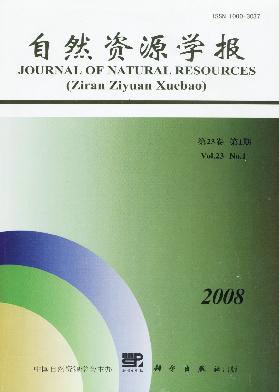Special Column:Celebration of the 70th Anniversary of IGSNRR, CAS
ZHANG Chun-li, TONG Lian-jun, LIU Ji-bin
Based on investigation on 310 households of 5 farmers located in core zone and 6 farmers of buffer zone of Sanjiang reserve of Heilongjiang in China, and analyses of response of farmers on conversion of cultivated land to wetland and substitute livelihood,we found farmers’s have different responses to conversion of cultivated land to wetland and substitute livelihood. In terms of conversion of arable land to wetland, this article presents findings of an in-depth study, that is, farmers’ response to cultivated land conversion is related to age, quantity of cultivated land and residential site. By comparison with these aspects, the result reveals that the youngsters and farmers lived in buffer zone prefer to it, but the supporting rate of those who own land between 6 and 12 ha is very low. The reasons of villagers opposing it are that they take the cultivated land as an important income source, and have no other living skills and enough money used in other industries. Other reasons agreeing with it include obtaining cash compensation, new training or new jobs opportunities, steady non-agricultural income and equivalent land replacement. As for substitute livelihood, most have no specific object, but they tend to select farming. The study indicates that the importance of wetland is recognized by most farmers, hereby, whether farmers agree with conversion of cultivated land to wetland or not, the supporting rate is still determined by the economic benefits of farmers sustained, moreover it is related to income source and living ability of farmers. In addition,the arable land is regarded as the existent safeguard by farmers because substitute livelihood is uncertain and unsteady. On second thoughts, the compensation system of conversion of arable land to wetland hasn’t come forth and substitute livelihood hasn’t been put forward, which are the holdback of conversion of arable land to wetland. Finally, based on consideration of regional environment, economic level and farmers’ needs, this article puts forwards the sustainable substitute livelihood models which are the ecological transmigrates in core zone, the traditional agriculture alteration in buffer zone and multi-industry model in experimental zone.
